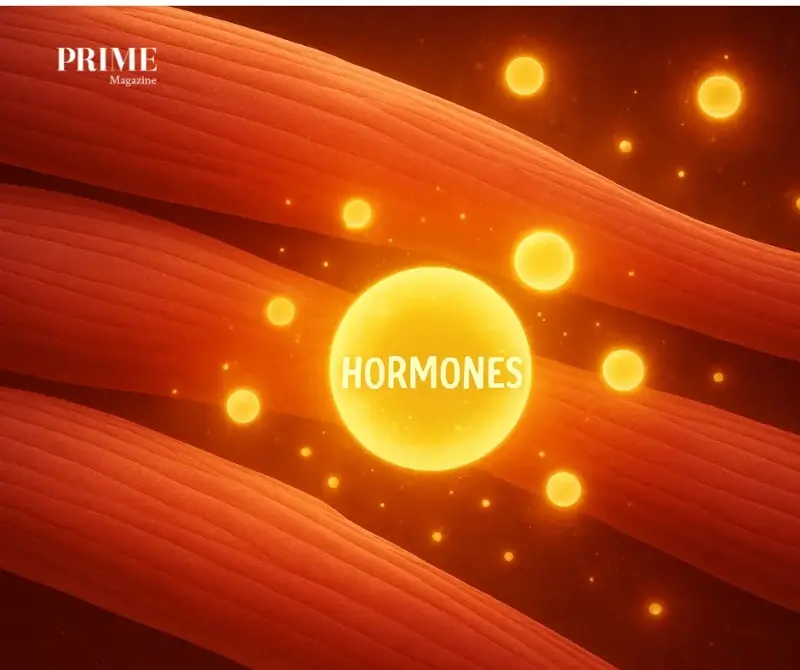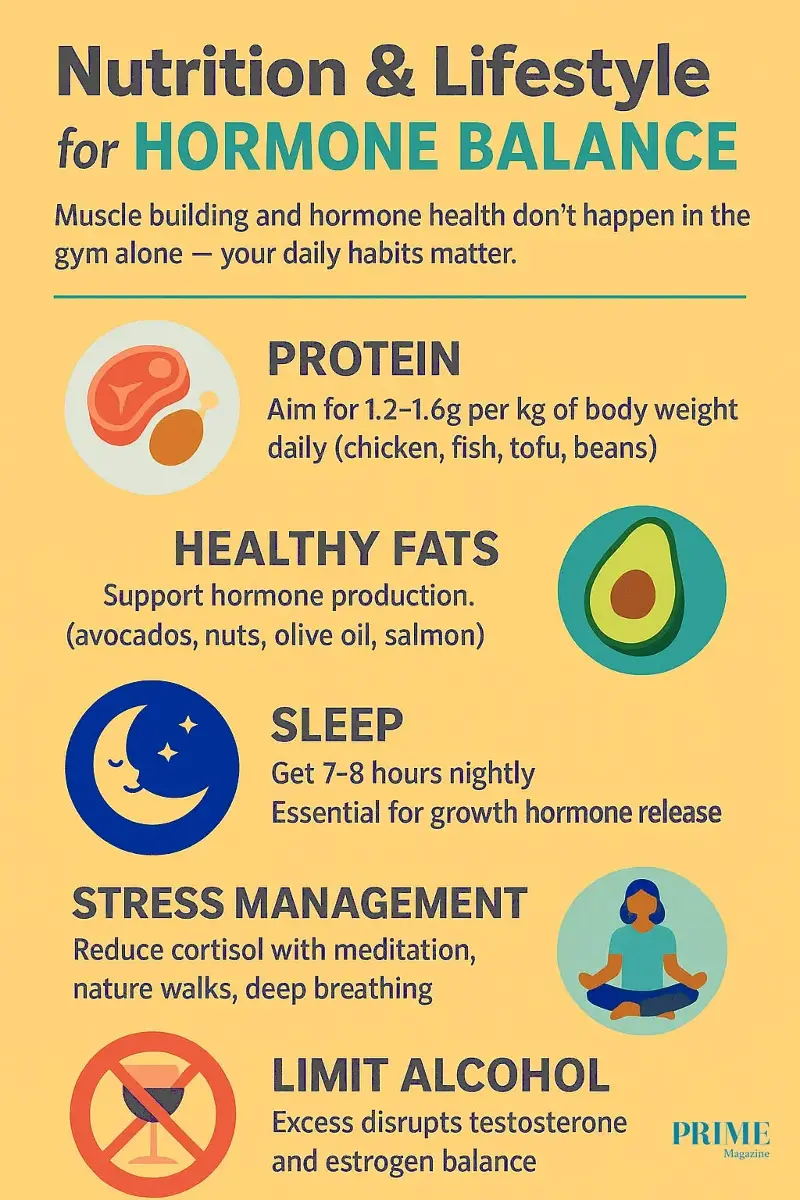Introduction: More Than “Just Aging”

By the time most of us hit our 40s, subtle but frustrating changes creep in. That stubborn belly fat won’t budge, energy dips, and moods swing. Many call it “just aging,” but the truth is deeper: hormones are shifting. The good news? Strength training for hormone balance is one of the most powerful tools to restore energy, stabilize mood, and push back against midlife changes.
The good news? You don’t need expensive therapies or miracle supplements to push back. One of the most powerful tools is something you can start today: building muscle through strength training.
The Hormonal Crossroads of Midlife

Hormones are chemical messengers that regulate energy, weight, mood, and even how fast you age. In your 40s, these key players begin to change:
-
Men: Testosterone levels decline by about 1% per year after age 30. Lower testosterone means less muscle mass, slower metabolism, reduced libido, and more belly fat.
-
Women: Perimenopause typically begins in the 40s, with estrogen and progesterone levels swinging unpredictably. This can cause hot flashes, poor sleep, weight gain, and mood instability.
-
Both: Growth hormone and IGF-1 (insulin-like growth factor) also drop, which slows recovery, reduces skin elasticity, and accelerates muscle loss.
The result? A perfect storm of fatigue, body composition changes, and a sense that the body is “working against you.”
Muscle: Your Body’s Natural Hormone Factory

Building muscle through strength training for hormone balance turns your body into a natural hormone-regulating machine.
-
Muscles release myokines – These powerful proteins fight inflammation, improve insulin sensitivity, and protect against chronic disease.
-
More muscle supports testosterone – Resistance training can increase testosterone production in men and help women preserve estrogen balance.
-
Strength training triggers growth hormone release – This boosts recovery, fat metabolism, and tissue repair.
-
Muscle stabilizes metabolism – With more lean mass, your body burns more calories at rest, countering the midlife metabolic slowdown.
In short: building muscle is like turning your body into a hormone-balancing machine.
Why Strength Training Beats Cardio for Hormone Health
Cardio has its place for heart health and endurance, but it doesn’t pack the same hormonal punch as strength training.
-
Cortisol Control: Too much cardio can raise cortisol (the stress hormone), which promotes fat storage. Weight training helps regulate cortisol instead of spiking it.
-
Better Sleep: Lifting heavy stimulates growth hormone during deep sleep, improving recovery and energy.
-
Sex Hormone Balance: Strength training is proven to increase testosterone in men and support estrogen’s protective effects in women, particularly for bone health.
-
Long-Term Fat Loss: Unlike cardio, the calorie burn from strength training continues for hours after a workout, thanks to elevated metabolic rate.
The Anti-Aging Benefits You’ll Notice

One reason experts recommend strength training for hormone balance is its powerful effect on metabolism, mood, and energy.
-
More energy – Say goodbye to afternoon crashes.
-
Stable mood – Endorphins and serotonin improve mental health.
-
Weight control – Hormonal balance makes fat loss easier and prevents belly fat gain.
-
Better sleep – Growth hormone and melatonin cycles improve with training.
-
Bone protection – Strength training + hormones = lower risk of osteoporosis.
-
Libido & vitality – Restored testosterone and estrogen levels support sexual wellness.
It’s no wonder researchers call muscle “the organ of longevity.”
Getting Started in Your 40s
The best part? You don’t need to become a bodybuilder to see results. A consistent, moderate strength program is enough.
-
Frequency: Aim for 2–3 sessions per week.
-
Duration: 30–45 minutes each session.
-
Exercises: Focus on compound movements that work multiple muscles:
-
Squats or lunges
-
Push-ups or chest presses
-
Deadlifts or hip hinges
-
Rows or pull-downs
-
-
Progression: Start light, focus on form, then gradually increase resistance.
-
Recovery: Allow at least 48 hours between sessions for the same muscle group.
Nutrition & Lifestyle for Hormone Balance

Muscle building and hormone health don’t happen in the gym alone — your daily habits matter.
-
Protein: Aim for 1.2–1.6g per kg of body weight daily (chicken, fish, tofu, beans).
-
Healthy fats: Avocados, nuts, olive oil, and salmon support hormone production.
-
Sleep: 7–8 hours nightly to allow growth hormone release.
-
Stress management: Meditation, nature walks, and deep breathing lower cortisol.
-
Limit alcohol: Excess disrupts testosterone and estrogen balance.
Conclusion: Strong Muscles, Steady Hormones, Stronger You

Midlife doesn’t have to mean decline. By building muscle in your 40s and beyond, you’re not just sculpting your body — you’re actively rebalancing hormones, boosting energy, and setting yourself up for healthy, vibrant decades ahead.
Forget chasing fads or quick fixes: strength training is the closest thing to natural hormone therapy you’ll ever find. PRIME
